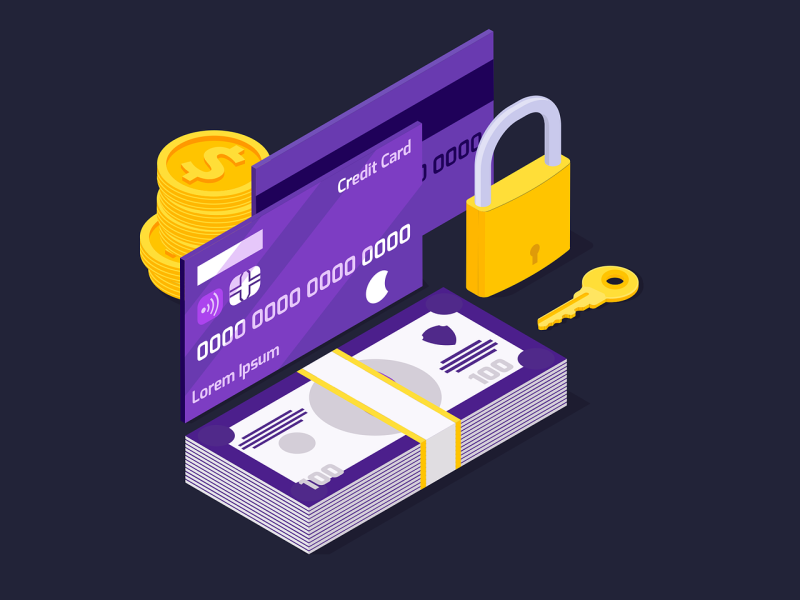How To Deal With Identity Theft And Fraud On Your Credit Report
In an age where personal and financial information is increasingly stored and transacted online, the threat of identity theft and fraud looms larger than ever before. For many, falling victim to these crimes can lead to the nightmare of having to deal with their consequences on credit reports.
Immediate Response to Suspected Identity Theft
If you suspect that your identity has been compromised or discover unauthorised activity on your credit report, it’s crucial to act swiftly. First, comb through your credit report for any unrecognised inquiries or new accounts, and detail every instance of suspected fraud.
Contact financial institutions directly where you detected suspicious activities to report the fraud and ask for freezes or closures of affected accounts. Immediately alert the three major credit bureaus—Equifax, Experian, and TransUnion—about the theft, and explore placing a fraud alert or credit freeze on your files to halt additional misuse.
Filing a report with the Federal Trade Commission (FTC) at IdentityTheft.gov is indispensable, as it generates an identity theft report and outlines a recovery strategy. Changing your online passwords, especially those linked to financial accounts, is another key step to securing your personal information from further breaches.
- Perform a comprehensive review of your credit report for unfamiliar activities.
- Contact banks and credit card companies to report unauthorised transactions.
- Place a fraud alert on your credit reports by notifying one of the three major bureaus.
- File an identity theft report with the FTC.
- Change all passwords for online banking and financial accounts.
After addressing these tasks, record the steps you have taken in detail for your records and potential future disputes or legal to-dos.
Establishing A Fraud Alert: Your Credit Shield
A fraud alert on your credit report is like setting up a first line of defence against identity breaches. You only need to contact one of the three major credit bureaus—Equifax, Experian, or TransUnion—to place an alert, and that bureau is obligated to tell the others.
When placing a fraud alert, be prepared to provide your Social Security number and an ID copy to confirm your identity. With a fraud alert in place, creditors must take extra verification steps before they can open new accounts in your name or modify existing ones, which acts as a strong deterrent against additional fraudulent activities.
Fraud alerts are free, and they typically last for one year, but they can be renewed for continued protection. After establishing a fraud alert, you have the right to a free credit report from each bureau, which allows you to double-check for suspicious activity.
- Contact any one of the major credit bureaus to initiate the placement of a fraud alert.
- Submit necessary identification evidence for verification.
- Understand that a fraud alert requires creditors to verify your identity more rigorously.
- Keep in mind that fraud alerts are cost-free and renewable.
- Check your credit reports for free post-alert placement.
This precautionary step can offer peace of mind, knowing that your credit is under an added layer of security.
Disputing Fraudulent Entries: The Paperwork Involved
Reporting fraudulent activities on your credit report demands a thorough approach. You’ll need to provide your full name and address, along with details such as account numbers and dates corresponding to each unauthorised transaction.
Coupled with these details, attach any supporting evidence, like police reports or bank statements, that will give substantial weight to your dispute.
Submitting a government-issued ID and a utility bill or bank statement that matches the address on your credit report helps verify your identity. Your dispute letter needs to lay out the facts clearly and request the removal of all fraudulent data from your credit report.
- Clearly state your identity and address on the dispute letter.
- Document each disputed transaction in detail.
- Attach corroborating documents to support your dispute.
- Supply a government-issued ID and a document for address verification.
- Draft a detailed dispute letter with a clear call to action.
A concise and well-documented dispute facilitates a smoother resolution process with credit bureaus.
Steering Unauthorized Credit Report Changes
The discovery of unauthorised activity on your credit report demands immediate action. Initiate contact with the credit bureaus that show the unwarranted activity to discuss placing a fraud alert. Reports of the unauthorised accounts need to also be communicated to the related financial institutions.
Filing a police report secures an official document for your records, which can be vital when disputing fraudulent accounts. The Federal Trade Commission (FTC) should also be notified as a central body for consumer identity theft concerns. It’s critical to keep thorough records of all fraud communications for potential future disputes or legal action.
- Reach out promptly to the credit bureau reporting the false activity.
- Contact the banks or institutions where fraudulent accounts were opened.
- Obtain a police report to record the identity theft officially.
- Inform the FTC to report the identity theft and access additional resources.
- Document all steps taken and communications received regarding the fraud.
Thorough records are your best ally in responding to and recovering from identity theft.
Regular Credit Report Monitoring – Early Detection is Key
Monitoring your credit report regularly is an effective way to catch identity theft early. At the very least, scrutinise your credit report once a year to spot any signs of fraudulent activity. You’re entitled to one free credit report a year from each main credit bureau through AnnualCreditReport.com.
If you’ve recently been a victim of identity theft or if your details have been compromised in a data breach, you’ll want to check your credit report more frequently. Also, before making any significant financial decisions, it’s crucial to review your credit report to steer clear of any surprises down the line.
- Set a reminder to check your credit report annually as a minimum.
- Take advantage of the free annual credit reports offered by each credit bureau.
- Increase the frequency of checks following any suspicion or past identity theft.
- Use credit monitoring services for prompt alerts and constant surveillance.
Consistent vigilance with credit report checks helps early detection and swift response to potential identity theft.
Building Resilience Against Credit Fraud
Dealing with identity theft and fraud is undeniably stressful, yet taking proactive and responsive steps can mitigate the impact on your credit report and overall financial health.
Early detection, continuous monitoring, and clear action plans are instrumental in safeguarding your financial reputation. By staying informed and prepared, you can build an effective defense against the threats of identity theft and ensure your credit report remains accurate and untainted by fraud.



